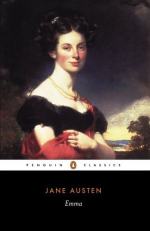|
This section contains 1,040 words (approx. 4 pages at 300 words per page) |

|
How Jane Austen's Emma and Amy Heckerling's Clueless Portray Women and Relationships in Society
Summary: Although the 19th-century novel Emma and the 20th-century film Clueless depict vastly different social and historical settings and societal values, the stories in both are essentially the same. Both similarly address the handling of relationships and the theme of self-growth, through humor, historical context, and characters who are ultimately endearing to their respective audiences. In this regard, both stories exhibit universal themes of relationships, maturity, and self-awareness.
The process of transformation from Jane Austen's 19th century novel Emma to Amy Heckerlings 20th century Clueless has been noted to be a dramatic change yet still retains the essential ideas of the original text. The importance of social structure, the status of women in society, deceptions and perceptive honesty are present in both texts. Though Clueless has been adapted to the 20th century it depicts similar people with the same traits as Austen's characters were relationships and their complexities, vanity, personal growth, misconceptions all form part of the transformation. However, different textual forms use different techniques to convey information. Emma may present important information in a letter while Clueless may have its characters talking on a mobile phone. However, they are both serving the same function: providing information.
Both Emma and Clueless draw on similar issues for their inspiration and present them in different ways. Both texts...
|
This section contains 1,040 words (approx. 4 pages at 300 words per page) |

|


